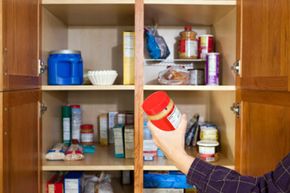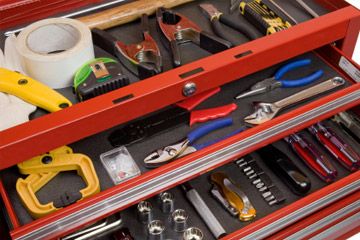If retrieving a single item from your pantry feels like a grueling hunt through mountains of stray cereal boxes and canned goods, it's probably time to get organized. Getting your pantry in order might take a huge chunk out of your weekend, but it could be an investment in your overall quality of life. In the long run, getting organized will probably save you time when it comes to preparing meals and grocery shopping. It may even help save you money and make the kitchen more accessible to family and friends.
There are several tried and true methods for organizing your pantry. Many of these strategies use some of the following basic principles:
Advertisement
- Group similar items together
- Make sure items you use regularly are accessible
- Put items in order of expiration date [source: Ehman]
This may seem pretty simple, but the key to successfully organizing your pantry is finding a system you can stick to. Your pantry should look the same a month after you organize it, and you should be able to find anything you need without spending a lot of time looking for it. That's where tools like containers, baskets and shelving can make a big difference.
Think about everything in your pantry. Foods come in an assortment of different shapes and sizes. Cereal, for example, usually comes in a box, nonperishable items often come in cans, and other ingredients like flour or sugar tend to come in bags. Fitting these items together in the same space isn't easy, and that's why using tools like stackable containers could help. If they're airtight, these tools might even help your food last longer [source: Tupperware].
Keep reading to find out what methods can get you on the road to organizing your pantry.
Advertisement



